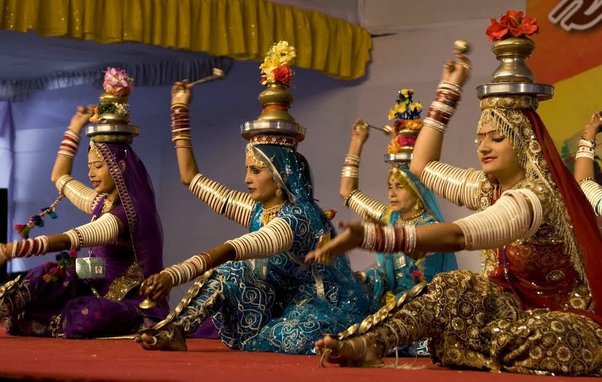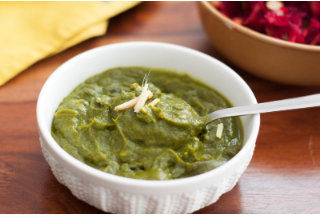Indian GK Questions and Answers for Competitive Exams

Which of the following books was written by James Mill, a Scottish economist, in 1817?
(A) Poverty and Un-British Rule in India
(B) A Passage to India
(C) The History of British in India
(D) The Great Mutiny
Correct Answer : C
Explanation :
1. 'The History of British India' is a book written by Scottish economist James Mill in 1817.
Which of the following books is written by Rajendra Prasad?
(A) India Divided
(B) An Autobiography: Towards Freedom
(C) The Discovery of India
(D) Glimpses of World History
Correct Answer : A
Explanation :
1. The book titled India Divided is written by Rajendra Prasad.
2. Rajendra Prasad was an Indian independence activist, lawyer and scholar. He was also the first President of India from 1950 to 1962.
Which of the following concepts implies that sustainable development should take a holistic approach towards notions of progress and give equal importance to non-economic aspects of wellbeing?
(A) Gross Domestic Product
(B) Gross National Product
(C) Gross National Happiness
(D) Net National Product
Correct Answer : C
Explanation :
1. Gross Domestic Product (GDP) is the standard measure of value added created through the production of goods and services in a country during a given period.
2. It also measures the income earned from that production or the total amount spent on final goods and services (less imports).
The Kamakhya Temple is located in ______.
(A) Guwahati
(B) Kohima
(C) Imphal
(D) Agartala
Correct Answer : A
Explanation :
1. Kamakhya Temple is a Hindu temple located on the Neelachal Hills in Guwahati, Assam.
2. This temple is dedicated to Goddess Kamakhya, it is one of the oldest and most revered centers of Tantric practices.
3. This temple is the center of Kulachar Tantra Marg and the venue of Ambubachi Mela
In the context of the culture of Uttarakhand, 'Kafuli' is the name of a:
(A) Cuisine
(B) folk dance
(C) festival
(D) style of painting
Correct Answer : A
Explanation :
1. Kafuli is a delicious dish of Uttarakhand prepared with leafy greens like spinach and fenugreek leaves. It is also known as Dhapdi in Garhwal.
Who among the following was the President of the Indian National Congress during the 1915 session?
(A) Satyendra Prasanna Sinha
(B) Ambica Charan Mazumdar
(C) Bhupendra Nath Bose
(D) Madan Mohan Malaviya
Correct Answer : A
Explanation :
1. Sir S.P. was the President of the Indian National Congress during the session of 1915. Sinha was. This was the 32nd session of the Congress, held in Mumbai from 1 to 4 December 1915. At this session, Congress reiterated its demand for self-rule for India and pressed for greater rights from the British government.
2. Some of the important resolutions passed in the 1915 session included:
- Demand for self-rule for India
- Pressure for more rights from the British government
- Demand for greater representation of Indians in the British Army
- Demand for improvement in education and employment opportunities for Indians
The Medieval ruler who significantly contributed in the development of Khayal style of classical music-
(A) Ibrahim Adil Shah
(B) Firoz Shah Tughlaq
(C) Hussain Shah Sharqi
(D) Wajid Ali Shah
Correct Answer : C
With which of the following states is the folk dance named 'Terah Taali' traditionally associated?
(A) Rajasthan
(B) Maharashtra
(C) Assam
(D) Telangana
Correct Answer : A
Explanation :
 The folk dance named 'Terah Tali' is traditionally associated with Rajasthan.
The folk dance named 'Terah Tali' is traditionally associated with Rajasthan.
1. Performed by women of the Kamad caste
2. It is done by tying 13 Manjeeras on different body parts.
3. Manjiras are played with rhythm
4. Padarla village of Pali district is the main centre of
5. This folk dance is performed in Baba Ramdev temple.
Who among the following revolutionaries was popularly known as 'Master Da'?
(A) Ashfaqulla Khan
(B) Batukeshwar Dutt
(C) Ram Prasad Bismil
(D) Surya Sen
Correct Answer : D
Explanation :
1. Among the following revolutionaries, Surya Sen was known as 'Master Da'.
2. He was an Indian revolutionary who led the Chittagong Armory Raid of 1930.
3. He was a school teacher by profession and was popularly known as Master Da.
4. In 1918, he was elected as the President of the Chittagong branch of the Indian National Congress.
Which of the following rivers form the Kunchikal waterfall in Karnataka?
(A) Mandavi
(B) Varahi
(C) Urmodi
(D) Kabini
Correct Answer : B
Explanation :
1. Kunchikal Falls in Karnataka forms the Varahi River.
2. It is located in Shimoga district of Karnataka state.
3. Forms other waterfalls of Karnataka state.
- Sharavati River: Jog Falls
- Kaveri River: Shivasamudram Falls
- Godavari River: Maneshree Falls
- Krishna River: Hukka Falls
- Kali River: Raphael Falls



